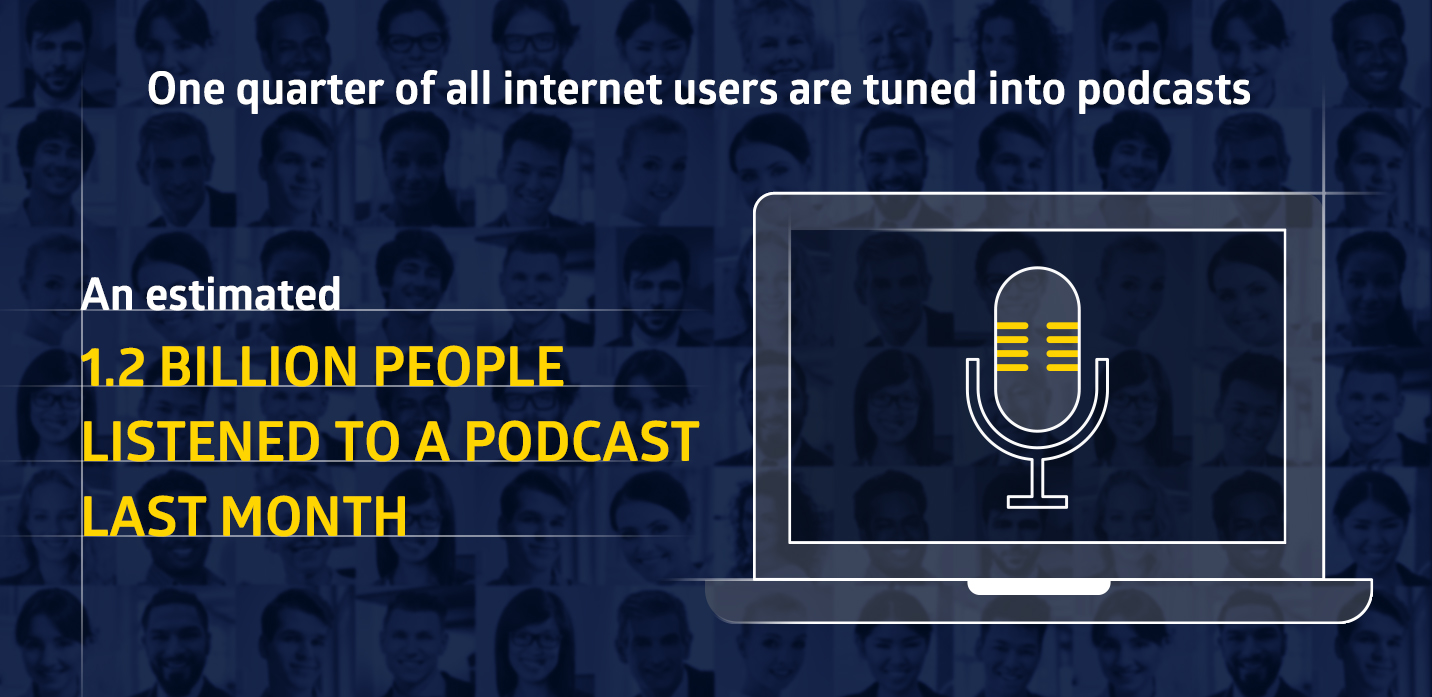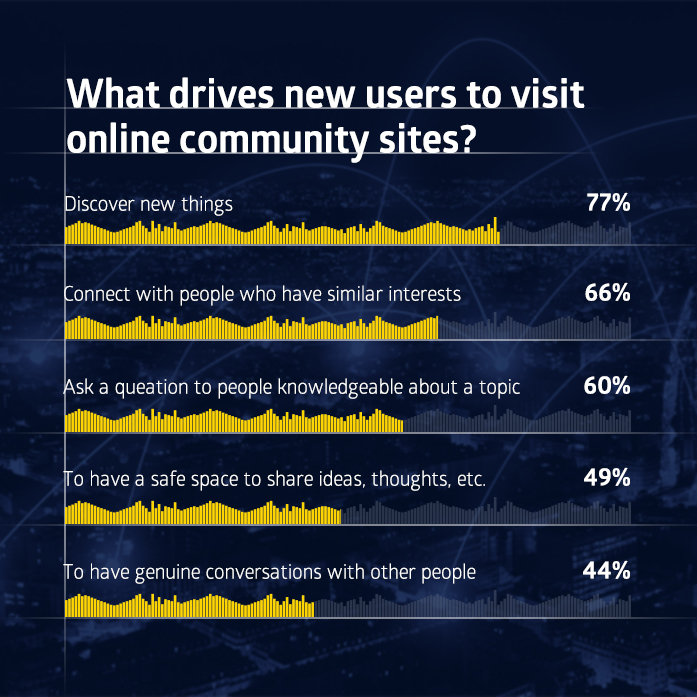The Rise of Social Audio
Over the last decade, audio content has undergone a quiet revolution to the point where major platforms are scrambling to capitalise on the growing demand. For those brands and rightsholders with their ears to the ground a new audience waits.
Digitised audio as entertainment can trace its roots back to radio drama adaptations of the 1980s. However, it wasn’t until the advent of the iPod and other digital audio devices in the early 2000s that ‘audioblogging’ or podcasting really took off.
Skip forward to present day and there are now an estimated two million podcasts spanning wide-ranging topics and genres. Worldwide, of those who have access to the internet, 26 per cent listened to a podcast last month.
Putting smartphone and internet penetration aside, there are inherent reasons for the medium’s huge surge in popularity over recent years:
- For the creator, the medium offers a low investment method of both production and distribution with viable revenue generating opportunities.
- For the listener, advocates love the raw, seemingly unfiltered dialogue between hosts and guests which often feels like listening in to a conversation with a friend.
- And for both, many of the benefits which attracted them to the medium in the first place have been exacerbated by the pandemic.
Furthermore, it’s an incredibly effective channel for storytelling, discussion and thought leadership. Over half of B2B senior decision makers have listened to or watched a podcast in the last month.
Making new soundwaves
Enter Clubhouse, the invite-only social network based on voice. Launched in September of 2020, just when Zoom gloom was really starting to take hold, the app has already generated 12.7 million downloads globally for the App Store alone.
With endorsement from celebrities including Elon Musk and Oprah, its breakout success has seen a proliferation of copycat social audio formats from all the major players:
- Having reportedly discussed a $4 billion acquisition of Clubhouse, Twitter rolled out a partial launch of its Spaces format in 2020 with a full blown rollout scheduled for Q2.
- In April, Mark Zuckerburg – himself a Clubhouse user and speaker – announced the creation of Live Audio Rooms and a short-form ‘Soundbites’ features.
- Earlier this year Spotify acquired Betty Labs, the creators of live sports audio app Locker Room.
- Meanwhile Reddit, Slack, Discord and LinkedIn have all announced their own plans.
While it’s not yet obvious who will come out on top of this audio gold rush, history tells us that once the established platforms get involved, the original pioneers are often left in their wake.
The growth of we
With online communities on the rise, social audio platforms are well placed to become a powerful tool for engagement.
Fandom is essentially community driven by shared passion, so naturally these platforms are rich territory for fans to debate the squad selection ahead of their team’s next Premier League match or unpick the lyrics of their favourite artist’s songs.
Think before you speak
A word of caution for those seeking to jump on the bandwagon without first kicking the wheels. Live audio presents a unique challenge for brands and rights holders around moderation. In the short time that Clubhouse has been live, it has already courted controversy for housing impersonation, harassment, misinformation, hate speech and scams.
However, there are significant first-mover advantages in terms of being the only brand in the space, but also capitalising on the incentives offered by the platforms themselves, to encourage the adoption of new features and formats.
Whether you are diving in head-first or simply testing the water, the medium may have changed but the same content creation rules still apply. Listen first, then act authentically and responsibly.
FURTHER LISTENING
– Unofficial partner
– SportsPro
– Leaders
Data: GWI 2021










